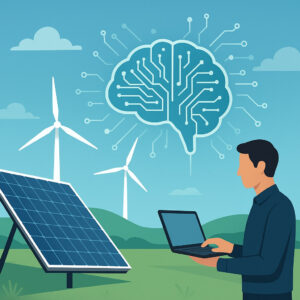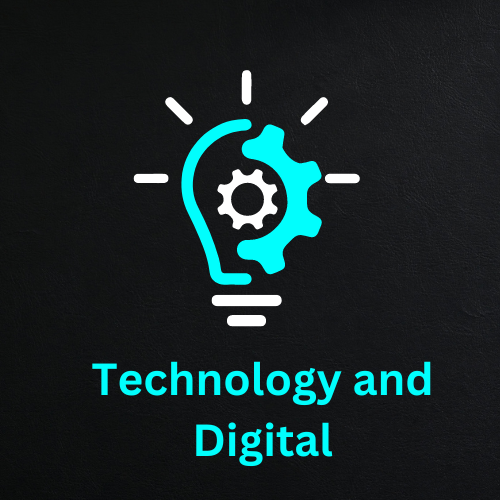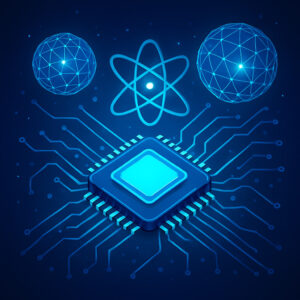Facilitating a Smoother Transition to Renewable Energy with AI

The global shift toward renewable energy is accelerating, but the journey is far from simple. As nations work to replace fossil fuels with cleaner alternatives, challenges such as energy intermittency, storage limitations, and grid reliability remain major hurdles. Fortunately, artificial intelligence (AI) is emerging as a powerful ally in overcoming these obstacles, helping to create a smarter, more stable, and efficient energy system. In 2025, the partnership between AI and renewable energy is reshaping the way power is produced, distributed, and consumed.
Understanding the Role of AI in Renewable Energy
Artificial intelligence refers to advanced algorithms and data-driven systems that can learn, predict, and optimize operations without constant human intervention. When applied to the energy sector, AI helps manage vast amounts of data from wind turbines, solar farms, and grid systems to make real-time decisions that improve performance and reliability.
The core challenge with renewable energy lies in its variability. Solar and wind power depend on weather conditions, which can fluctuate daily or even hourly. AI bridges this gap by analyzing data patterns, forecasting energy output, and automating responses across the grid. This ensures consistent energy delivery even when natural conditions change unexpectedly.
Practical Tip:
Energy companies can start by implementing AI-driven monitoring tools to track generation and demand trends in real time. This approach improves efficiency and reduces energy waste during peak and off-peak hours.
Key Applications of AI in Supporting the Energy Transition
AI is transforming renewable energy operations from top to bottom. Here are some of the most impactful areas where intelligent technologies are making a measurable difference.
1. Predictive Forecasting for Solar and Wind Energy
Accurate weather forecasting is crucial for renewable energy planning. AI systems process millions of data points—satellite images, meteorological models, and historical climate patterns—to predict sunlight and wind availability with high precision. These forecasts allow operators to schedule power generation more efficiently, reducing reliance on backup fossil fuel systems.
For instance, AI-based models can predict solar output up to 36 hours in advance with over 90% accuracy. This insight helps utilities plan grid balancing and energy storage usage more effectively. Companies like Google’s DeepMind and IBM are already using AI algorithms to forecast renewable output and optimize grid distribution in real-world pilot projects.
Practical Tip:
Grid operators can integrate AI-powered forecasting tools into existing control systems to anticipate supply fluctuations and maintain grid stability during weather shifts.
2. Smart Grid Optimization
The concept of a smart grid relies heavily on AI. Traditional electricity grids were designed for centralized power generation, but renewables require flexibility and adaptability. AI-driven smart grids can dynamically adjust energy flow, detect faults, and automatically reroute power where it’s needed most.
Through machine learning, these grids analyze real-time data from millions of connected devices—from homes and EV chargers to wind farms and storage systems. The result is an intelligent network capable of self-correction, demand prediction, and efficient energy allocation. In 2025, many countries are investing in AI-integrated grid systems to prevent blackouts and make renewable integration seamless.
Practical Tip:
Utilities can use AI-driven demand response programs that incentivize consumers to use energy during off-peak hours, reducing grid strain and stabilizing supply.
3. Energy Storage and Battery Management
One of the biggest challenges in renewable energy is storing excess power. AI helps manage this by optimizing battery usage and predicting when to charge or discharge energy based on future demand and generation forecasts. By extending battery life and improving storage efficiency, AI makes renewable energy more reliable and cost-effective.
In large-scale storage systems, AI algorithms monitor temperature, charge cycles, and energy degradation to prevent failures. This predictive maintenance not only reduces operational costs but also ensures consistent performance across storage networks. With global energy storage capacity expected to triple by 2030, AI will play an increasingly vital role in maintaining performance and sustainability.
Practical Tip:
For renewable project developers, integrating AI-based energy management platforms early in the design phase can significantly reduce future maintenance and replacement costs.
4. AI in Energy Trading and Market Optimization
AI also supports the financial side of the energy transition. Energy prices fluctuate due to market dynamics, demand surges, and weather conditions. AI-driven trading systems analyze these factors in real time, allowing traders and energy companies to make faster, more informed decisions. Predictive algorithms help forecast price trends, identify profitable moments for energy sales, and minimize financial risks.
As global energy markets become more decentralized, AI-powered automation ensures smoother transactions between producers, distributors, and consumers. This leads to more transparent and efficient energy economies that can better support renewable integration.
Practical Tip:
Renewable energy investors can use AI-driven market intelligence tools to forecast long-term profitability and hedge against price volatility in power trading.
How AI Supports Decarbonization Goals
Reducing carbon emissions is a top priority for governments and corporations alike. AI is a crucial enabler in tracking, measuring, and minimizing carbon footprints across the energy supply chain. Smart analytics platforms can estimate CO₂ reductions from renewable projects and provide real-time dashboards for monitoring environmental impact.
Moreover, AI assists in optimizing industrial processes by detecting inefficiencies that contribute to unnecessary emissions. For example, in manufacturing and logistics, AI-based control systems reduce waste, streamline production, and improve fuel efficiency. Together, these advancements bring the world closer to achieving global net-zero goals.
Practical Tip:
Organizations can adopt AI-powered carbon accounting platforms to track sustainability metrics accurately and demonstrate compliance with evolving green regulations.
AI and the Integration of Electric Vehicles (EVs)
Electric vehicles are another cornerstone of the renewable transition. However, large-scale EV adoption introduces new challenges for the power grid, such as fluctuating demand and uneven charging behavior. AI helps balance this load by predicting when and where energy demand will rise and adjusting grid output accordingly.
Smart charging systems use AI to optimize charging times based on electricity prices, renewable availability, and grid stability. For example, when solar generation is high during the day, AI systems can automatically encourage EV charging, storing clean energy that might otherwise go unused.
Practical Tip:
Municipalities can use AI-based EV management software to coordinate public charging infrastructure, ensuring balanced energy distribution and reduced peak load stress.
Challenges and Ethical Considerations of AI in Energy Transition
Despite its potential, integrating AI into renewable energy systems is not without challenges. High data dependency means that quality, accuracy, and transparency are critical. Poor data can lead to unreliable predictions or inefficient energy allocation. Additionally, cybersecurity risks increase as grids become more connected and automated.
Another concern involves the ethical use of AI. Algorithms must be designed to avoid biases, protect privacy, and ensure fair energy access. As automation expands, human oversight remains essential to prevent overreliance on algorithmic decision-making.
Practical Tip:
Energy organizations should establish clear governance frameworks for AI deployment, including data ethics policies, cybersecurity standards, and regular audits of algorithmic performance.
Global Trends and Future Outlook for AI in Energy Transition
In 2025, the synergy between AI and renewable energy continues to accelerate. Governments worldwide are investing in “smart energy” infrastructure, while private companies are launching AI-powered solutions to enhance grid resilience. According to the International Energy Agency (IEA), digitalization could improve global energy efficiency by up to 15% by 2030, much of it driven by AI technologies.
Emerging innovations such as AI-enhanced hydrogen production, autonomous wind farm maintenance robots, and decentralized energy markets are redefining what’s possible. As AI systems become more advanced, they will not only manage renewable networks but also drive innovation in how energy is produced, traded, and consumed.
Practical Tip:
For policymakers and energy leaders, investing in AI research partnerships and digital infrastructure today will pay dividends in the form of cleaner, more resilient energy systems tomorrow.
Conclusion: AI as the Catalyst for a Sustainable Energy Future
The global energy transition is one of the most ambitious transformations in human history—and artificial intelligence is the catalyst making it possible. From improving forecasting accuracy to balancing complex power grids, AI provides the intelligence and agility needed for renewable systems to operate smoothly and reliably.
As technologies evolve, the collaboration between AI developers, energy providers, and policymakers will define how quickly and effectively the world achieves net-zero goals. The future of clean energy is not just about generating power—it’s about generating insight.
What’s your perspective on AI’s role in renewable energy? Have you seen AI-driven systems improving sustainability in your community or business? Share your experiences in the comments below and explore how smart technology can help power a cleaner, more connected world.
Call to Action: Stay informed about the latest AI and renewable energy trends, and consider exploring AI-powered tools to optimize your energy use, whether at home, in business, or across industry operations.




